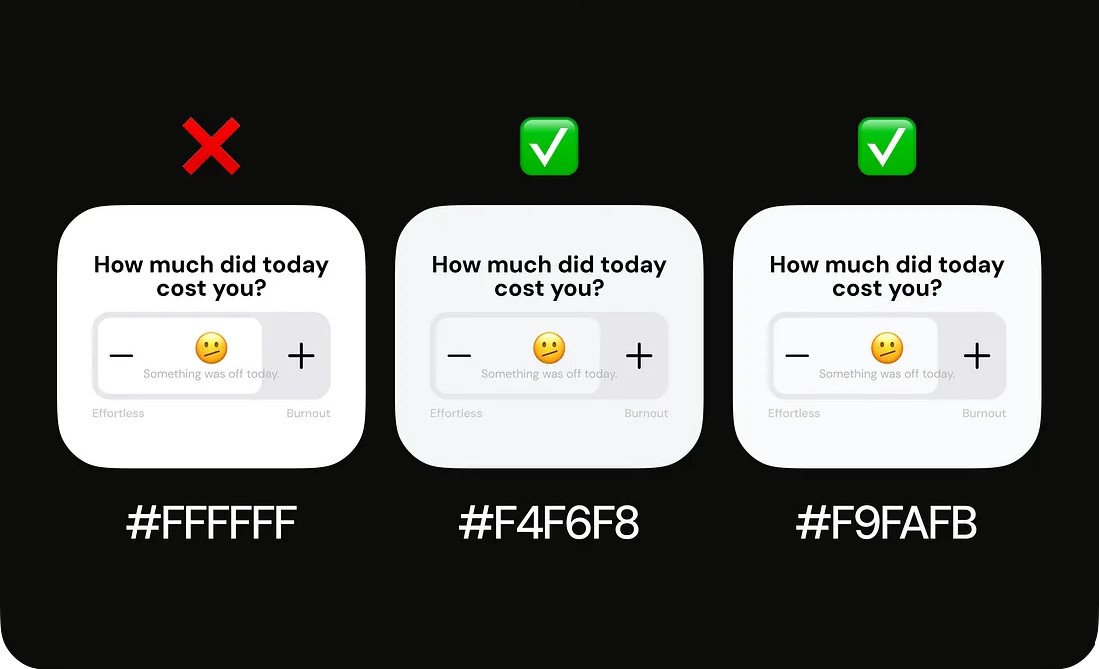Dark themes are everywhere now—apps, dashboards, operating systems, even productivity tools. They look sleek, futuristic, and “easy on the eyes.”
But here’s the trap: a bad dark UI can be just as blinding as a bad light UI.
Crank up the contrast too much, and users feel like they’re staring at neon signs in the dark. Go too soft, and everything blends together in a muddy gray mess.
Over the years, I’ve designed dark UIs for SaaS platforms, data dashboards, and mobile apps. Here’s what I’ve learned: dark mode isn’t just flipping colors—it’s about clarity, depth, and usability in real-world scenarios.
Why Users Love Dark Themes
Dark UIs feel:
- Modern
- Focused
- Comfortable at night
That’s why you’ll find them in:
- Code editors (VS Code, JetBrains)
- Entertainment apps (Netflix, YouTube)
- Gaming platforms (Steam, Discord)
But remember: preference ≠ performance. Some users only switch to dark mode if it’s well executed.
My Workflow for Designing Dark Themes
1. Start With True Neutrals
Avoid pure black (#000000). It creates harsh edges and eye fatigue.
Instead, go for softer shades like #121212 or #1E1E1E. These neutrals absorb light more naturally and allow brighter elements to stand out.
2. Balance Contrast (Don’t Blind People)
Contrast is your best friend—but only when controlled.
- Use slightly off-white text (#EAEAEA) instead of pure white.
- Maintain minimum 4.5:1 contrast ratio for readability.
- Make active elements vibrant (but don’t turn your UI into a glow stick).
⚠️ Mistake I made once: using pure cyan for links. It looked “techy” but destroyed legibility on OLED screens.
3. Depth Matters More in Dark UI
Light themes use natural brightness for separation. In dark themes, you need to fake depth:
- Use layered backgrounds (#121212 → #1A1A1A → #222222).
- Apply soft inner shadows to give surfaces hierarchy.
- Keep borders subtle—#2A2A2A is your friend.
4. Typography Adjustments
Fonts behave differently on dark backgrounds:
- Increase font weight slightly (400 → 500).
- Add 1–2px letter spacing for small text.
- Avoid thin fonts—they disappear in low light.
5. Interaction States Should Glow (Subtly)
Hover and focus states are harder to spot on dark backgrounds.
- Use subtle glows, underlines, or overlays.
- Differentiate states clearly: hover ≠ active ≠ disabled.
- Test them in grayscale—if you can still tell the difference, you’re safe.
6. Keep Branding Alive
A common mistake: “everything dark = everything gray.”
Instead:
- Infuse accent colors for buttons, links, and highlights.
- Use branded gradients or illustrations sparingly.
- Keep empty states engaging with brand personality.
Common Dark Theme Mistakes
- Using pure black + pure white → eye strain.
- Too little contrast → muddy, unreadable UI.
- Forgetting hierarchy → everything looks flat.
- Overuse of neon accents → nightclub effect.
Golden Rule: Dark mode ≠ inverted colors. It needs a custom design system.
🔝 My Go-To Tools for Dark UI
Figma Plugins:
- Contrast (to check ratios)
- Tokens Studio (for consistent theming)
Color Tools:
- Coolors
- Khroma
- Material Design Dark Theme Guidelines
Testing:
- Preview on OLED and LCD screens.
- Test in low-light and bright-light environments.
☞ Dark themes done right feel natural, modern, and professional. Done wrong, they feel like cheap hacks.
Remember:
- Neutrals are your base.
- Contrast must be controlled.
- Depth gives structure.
- Branding keeps it unique.
“Dark UI is not the absence of light. It’s the art of guiding focus when brightness steps back.”

